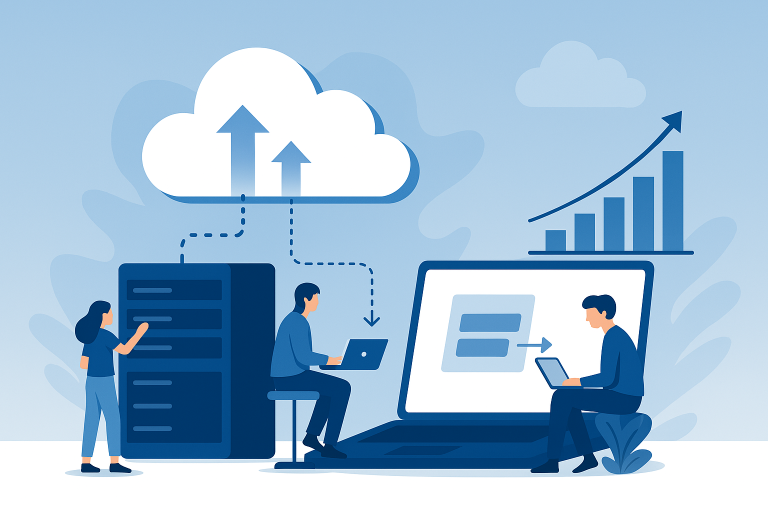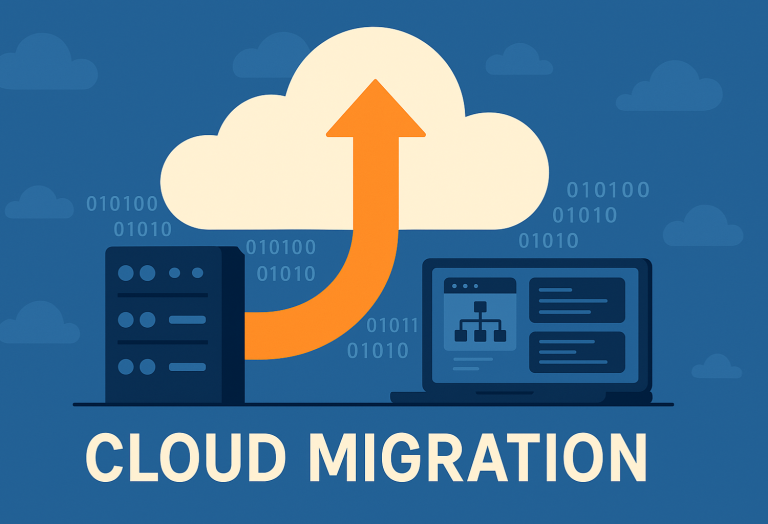
Any kind of disasters like cyber-attack, data theft, or natural calamities can cause massive disruption to your business. Regardless of their size, companies are being affected by data exposers, causing financial losses and distortion of market reputation. Sensitive information leaks, whether accidental or intentional, harm businesses largely due to inadequate information security.
With the development of technologies, cybercrime incidents are vigorously increasing. An increasing number of organizations, especially SMBs, are being attacked and facing data breaches. Having a disaster recovery plan is essential for organizations to respond promptly and effectively to emergencies.
One thing that is often found common in SMBs is the absence of a solid backup and disaster recovery plan (BDR). In most cases, data backup and recovery are neglected due to reasons like budget crunch, lack of knowledge, etc. But, in reality, establishing a good backup and disaster recovery plan is one of the fundamental needs for a business to survive and sustain itself.
Why a Backup and Disaster Recovery Plan is Crucial
Data loss can be dangerous for any business. According to an industry study on small businesses by The Diffusion Group, the result is quite threatening. 60% of organizations have to close down their business within six months of a massive data loss incident. There can be several reasons behind a closing, such as loss of revenue, work time, financial penalties, etc., due to data loss.
The amount of financial loss may vary depending on the size of your business. Downtime can cost up to $50,000 per hour for a small business. And depending on the industry and countries you do your business, regulatory committees can charge heavy fines for data loss and violation of privacy norms. That’s not all. Losing consumer trust is something more harmful. A survey by Ping Identity reveals that 78% of participants responded that they would not like to be engaged with an online band that has experienced a data breach. And 49% answered that they wouldn’t even sign up and use an online service that recently experienced a data leakage. So, not only time or money loss, you may have to lose current customers after a data leak and struggle to gain new customers.
What is a disaster recovery (DR) plan? How does it work?
In simple words, a disaster recovery plan (DRP) is a formal document containing detailed instructions on how to respond to an accidental incident like a cyberattack, power outage, natural disaster, or any other disruptive event. Organizations must have a disaster recovery backup plan to minimize the effects of any disaster to continue with their regular operations uninterruptedly or quickly resume critical operations.
A DRP is a vital component of your business continuity plan (BCP). The main focus of a DRP is to help an organization deal with data loss, recover system functionality, etc. It is basically a step-by-step plan containing the safety instructions to minimize the effects of a disaster. With prompt actions and quick fixes, you can reduce downtime, along with both financial and reputational damages. Moreover, disaster recovery plans make companies meet all compliance requirements and provide them with a clear roadmap to data recovery.
The rate of data breaches has increased along with the onset of the pandemic crisis. As several white-collar employees are forced to work from home and use public networks, the number of data breaches has increased. Even organized hacking groups are targeting government agencies and large corporations. But SMBs are common targets as they are easy to penetrate and less likely to survive these data breaches.
What are the signs of a Good Backup and Disaster Recovery Plan?
To protect your data, recover fast (if lost), and minimize downtime & loss, you should have an efficient backup and recovery plan. Here are some key aspects to consider when building a recovery plan.
1. Automate backups
It will immune you from forgetting to save important data. Automated backups also help to backup your data more frequently, which means fewer chances of losing important data during a disaster.
2. Backup Often
How often you should back up your business infromation is a crucial question. Frequent data backup – at least once a day, is the best way to save your data. The less frequent data backup practice increases the chances of larger data loss and delayed resume of routine operating procedures after an accidental downtime.
3. Opt for offsite backup
Offsite data backup practice is the best to keep your data safe when there is a natural disaster like fire accidents, earthquakes, cyclones, etc., affecting the whole locality. Keeping on-premises backups may work as an additional copy of your data, but offsite backup is a much better strategy to protect your sensitive information.
4. Take data protection seriously.
Nowadays, when cybercrimes and security breaches have become more sophisticated, classic protections measures like antimalware or antivirus software, firewalls, etc., are not sufficient to keep your data safe. You need to think about more effective security measures like zero-trust architecture, Two-factor authentication (2FA), endpoint security, etc.
5. Employees training
Employee training is crucial to upskill your staff with cybersecurity practices—otherwise, it is common among people to make cybersecurity mistakes and risk their company’s sensitive data. But proper training of your team can help to protect your data.
6. Maintain your network
Regular network maintenance is vital. It prevents glitches and bugs from infecting your network. You also need to set effective protocols to update OS and patches. These updates often contain important security fixes that can help to keep hackers out.
How Managed IT services can help with your DRP?
Every company is different, and it has different needs. It is not always possible for your in-house staff to develop an effective backup and disaster recovery plan. Here a managed IT service provider can help you. Your MSP can make a disaster recovery plan considering your business needs. A tailored DRP can help you take the necessary steps to be prepared for and protected from various crises. Whether it is a cyber-attack or digital sabotage, a natural disaster or a man-made disruption, a comprehensive disaster recovery backup plan is important to regain the upper hand in a crisis. It will also help you resume your business, even after a major disruption.

